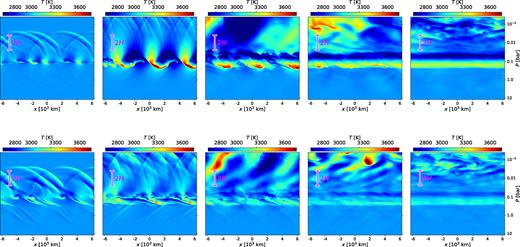A number of hot Jupiters are observed to have radii larger than what predicted from standard cooling models. The origin of the radius inflation is still debated. One idea to explain the inflated radii is injection/dissipation of heat via turbulence and shocks. In this study, my collaborator Michael Zingale, Rosalba Perna and I performed high resolution 3−dimensional compressible hydrodynamics simulations to investigate the effects of shocks and turbulence on energy transport into hot Jupiter atmospheres, under a variety of shear gradients. We focus on a local atmospheric region to accurately follow the small-scale structures of turbulence and shocks. We find that the effects of turbulence above and below a shear layer are different in scale and magnitude : local effects below the shear layer, but spatially and thermally large influences on almost the entire region above the shear layer. We also find that shock formation is local and transient. We infer that the time-averaged heat energy flux at P ∼ 1 bar is insignificant, on the order of 0.1% – 0.001% of the incoming stellar flux with a shear motion at P ≃ 1 mbar – 100 mbar. Our results suggest that it is more important how deep turbulence occurs in the atmosphere, than how unstable the atmosphere is for effective energy transfer. See our paper for more details!

